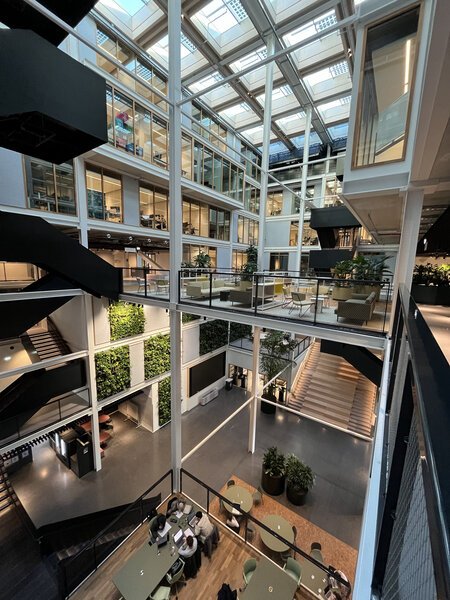Feb. 8, 2023
Back to the University
Diving into Scientific Programming
This month, I headed back to university for a special course on scientific programming. With numerous recent advancements in machine learning (referred to as "AI" in PowerPoint parlance), including ChatGPT, it felt like the ideal moment to delve into Python programming. Join me on this journey.
Why Python for Scientific Programming?
Python has gained immense popularity within the scientific community, and for good reason. Its simplicity and readability make it approachable for newcomers, whilst retaining the power to tackle complex tasks. The language's versatility enables researchers and scientists to implement algorithms and models with relative ease.
An extensive array of libraries tailored for scientific computing, such as NumPy, SciPy, Pandas, and Matplotlib, bolsters Python's position in this domain. These libraries offer comprehensive functions and tools for data analysis, statistical modelling, and visualisation, thus streamlining the scientific programming process.
In comparison to other programming languages, such as JavaScript or Ruby, which often find use in non-scientific contexts like web development, Python boasts a more straightforward syntax. This characteristic allows users to focus on the problem at hand rather than wrestling with language intricacies. Additionally, Python's extensive scientific ecosystem renders it a more suitable choice for research applications.
Examine the following two code samples, one in C++ and the other in Python 3. Each program performs identical tasks: requesting the user's name and date of birth, carrying out basic input validation, and ultimately revealing the user's current age.
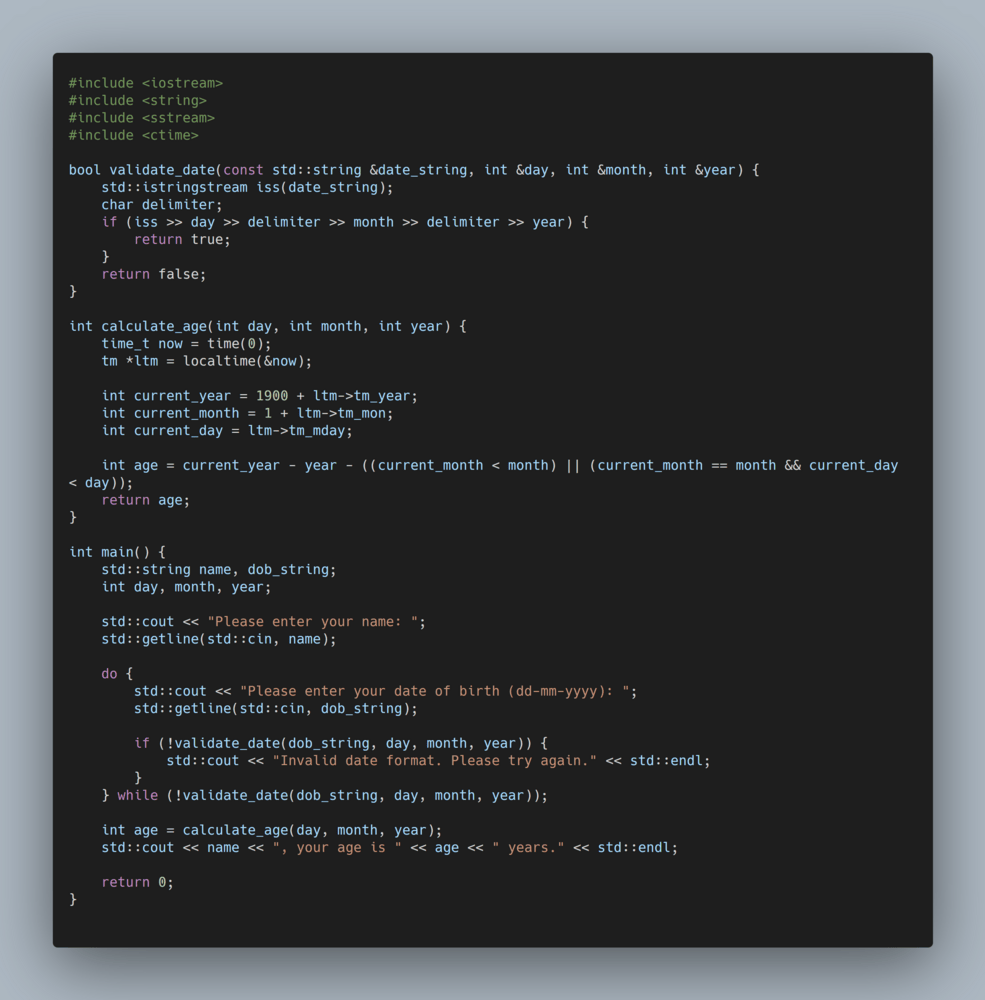
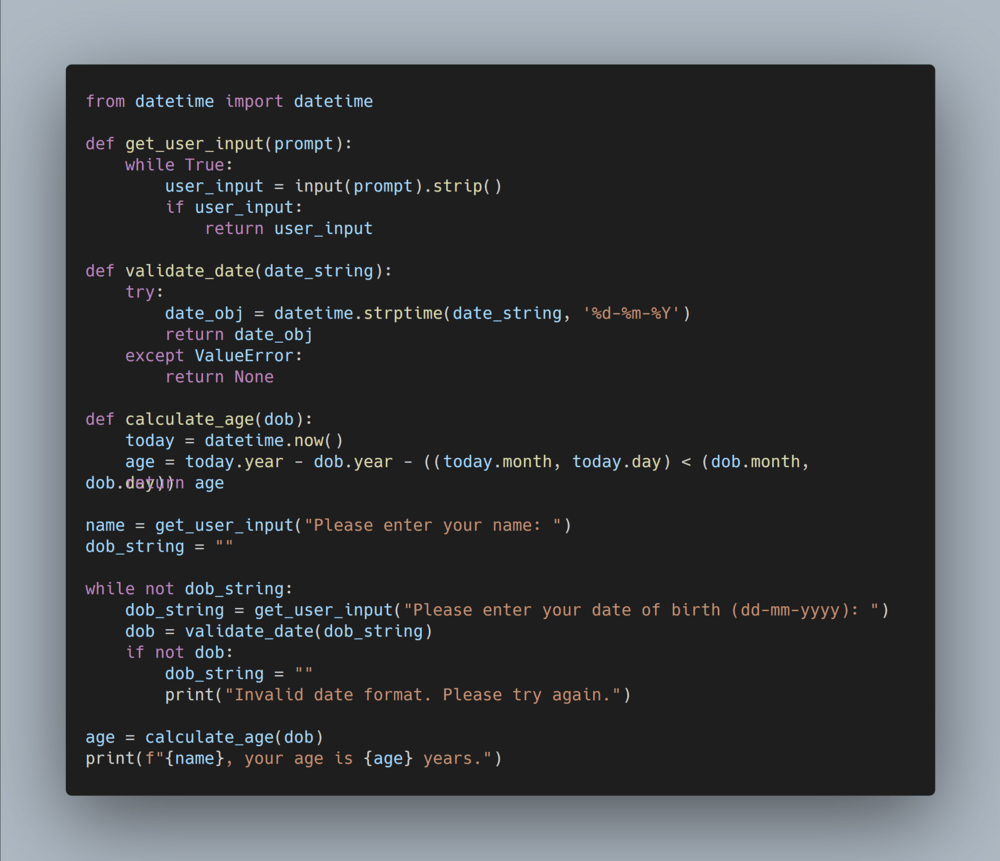
One can easily observe the contrasting syntax between the two languages, with Python bearing a closer resemblance to everyday English. This aspect of Python often enhances readability and comprehension for many users.
Another factor contributing to Python's success in scientific programming lies in its thriving community. Researchers and developers from various disciplines share knowledge, offer support, and contribute to open-source projects, fostering an environment of collaboration and continuous learning.
The Course
Throughout the course, the absolute basics of programming were explored by tackling problems from various scientific domains. Upon completion, a solid grasp of programming principles was acquired, with the ability to apply them across different fields and projects.
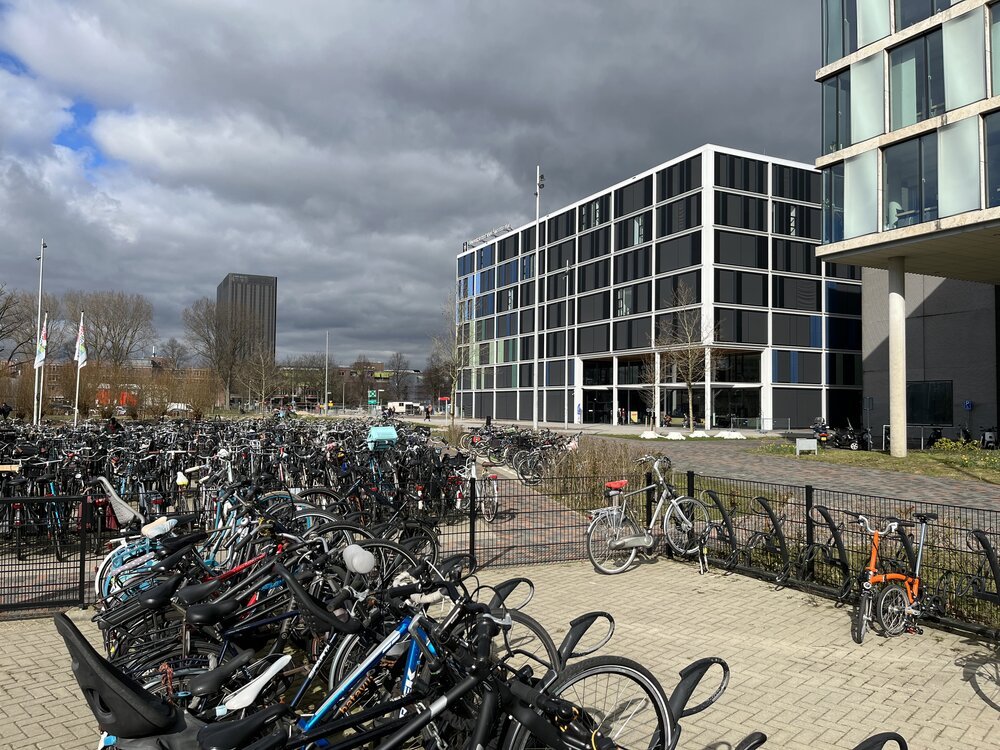
Revisiting the basics of programming, even for experienced programmers (like myself), can prove to be immensely beneficial. Over time, it's not uncommon for programmers to develop habits or shortcuts that may not adhere to best practices. By returning to the fundamentals, you can unlearn any detrimental habits and re-establish a strong foundation in programming principles. Additionally, the fast-paced nature of the tech industry means that innovations and updates are constantly emerging. By revisiting the basics, seasoned programmers can stay up to date with the latest advancements and methodologies. This process of re-evaluation also offers an opportunity to approach programming with a clean slate.
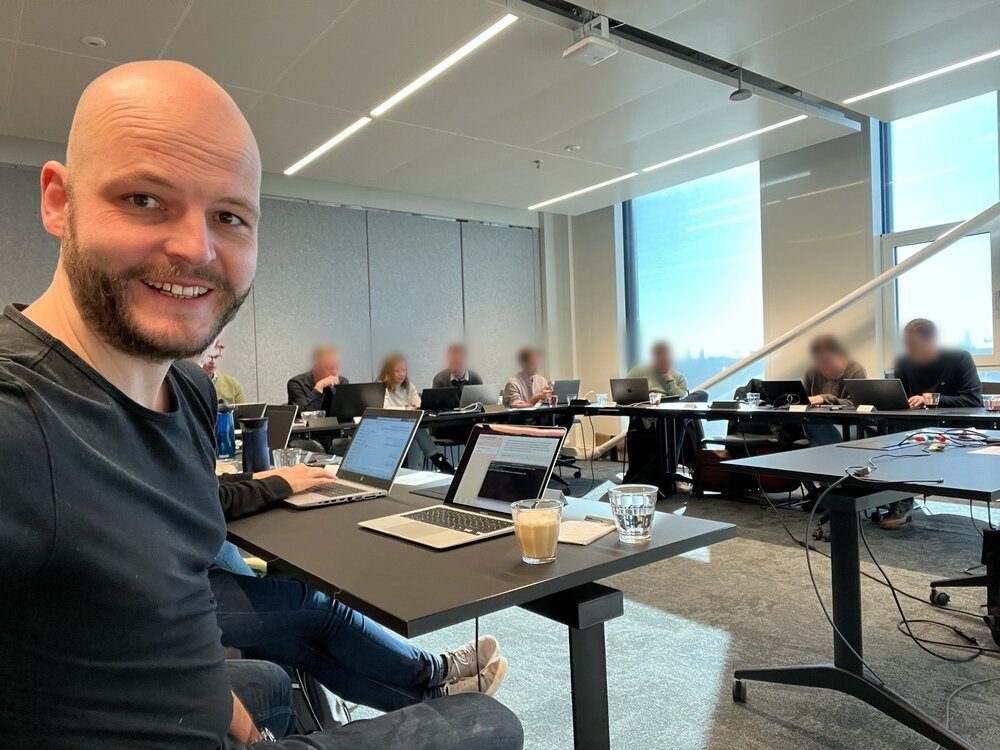
The course consisted of multiple modules, starting with Level 1, where a choice was made between ALGORITHMS, which focused on breaking down intuitive problems into steps a computer could understand, and NUMBERS, a mathematically oriented module that delved into number properties without requiring prior maths knowledge. In Level 2, the choice was between TEXT, which centred on natural language processing and sentiment analysis of tweets, and NUMERICAL INTEGRATION, where important techniques for determining surface areas under functions when traditional integration didn't suffice were taught. Level 3 involved working with BIG-DATA, analysing large datasets and weather patterns in the Netherlands. An optional bonus level, MOVEMENT, provided a simulation of digging a tunnel through the planet and explored physics problems solvable with computer assistance.
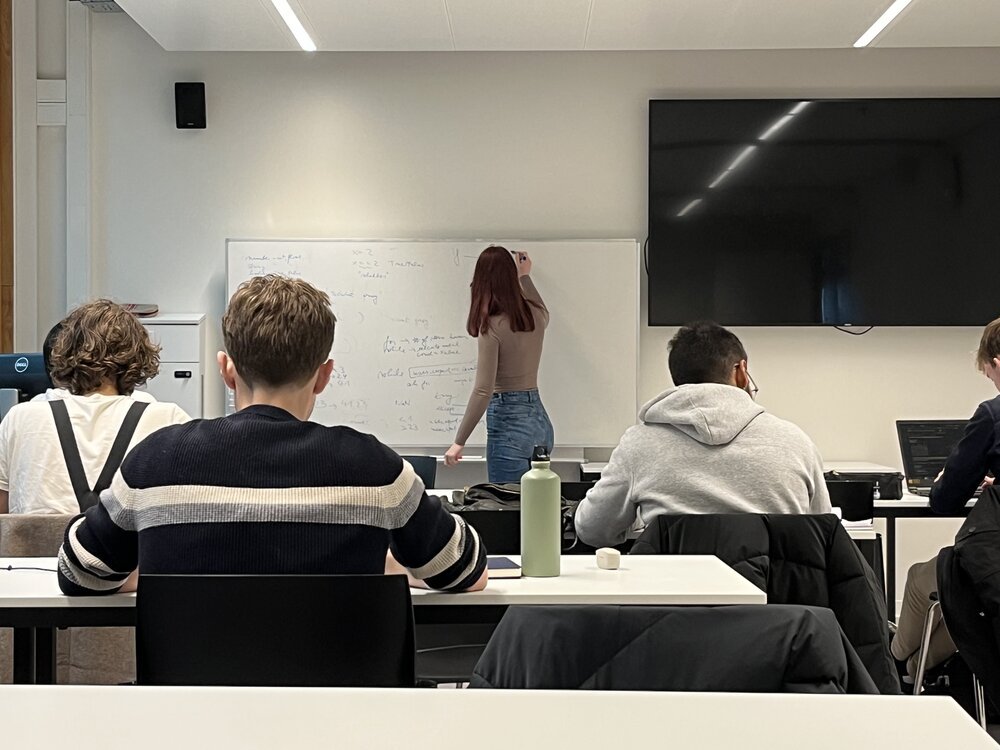
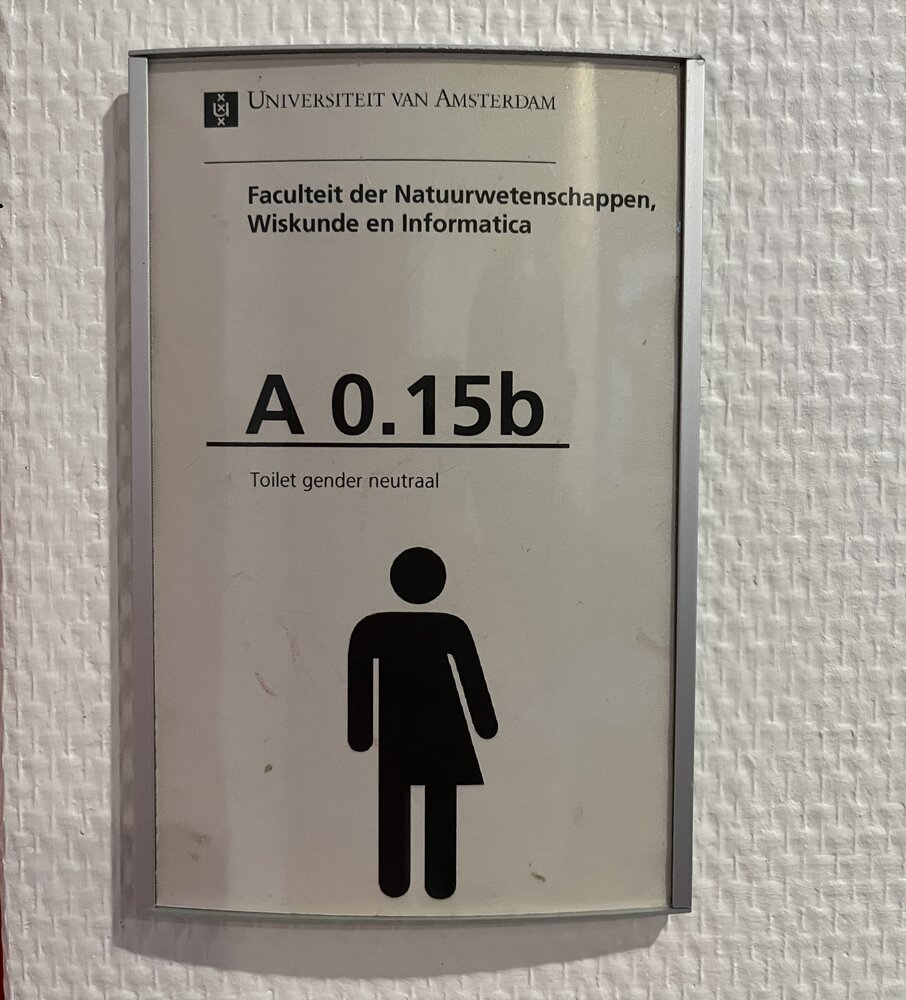
Conclusion
No matter one's age or wisdom, there's always room to learn something new, particularly with advancements in machine learning like GPT4. Moreover, going back to university provides a refreshing change, presenting a completely different context compared to the commercial or professional sphere in which I typically operate. Embrace the mantra: stay hungry, stay foolish!

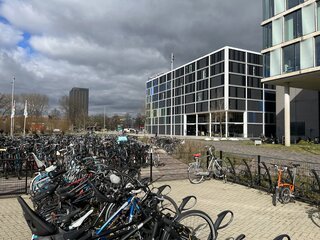
Download
If you enjoy reading offline, this article is available for download:
Translations
This article is available in the following languages:
RSS / Atom
Grab one of the feeds to stay up to date, the feeds contain the full posts:
